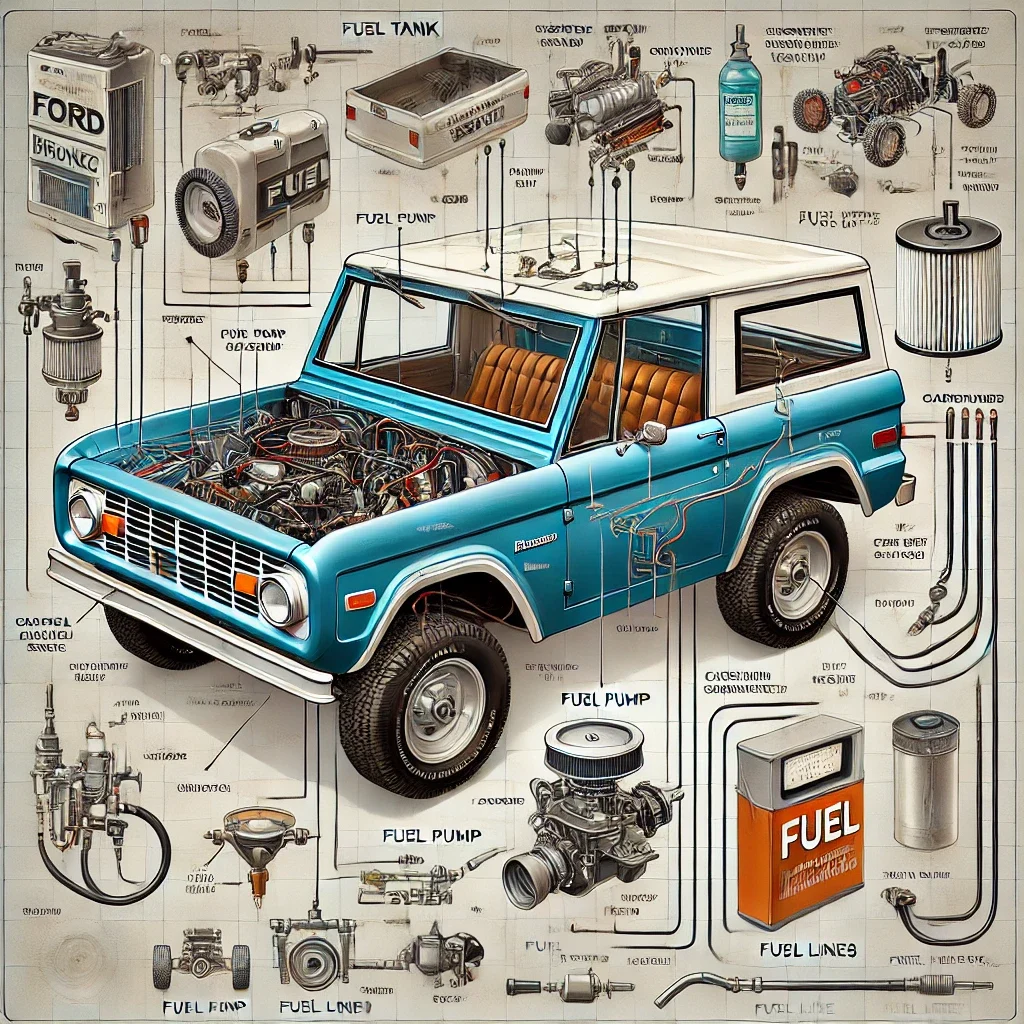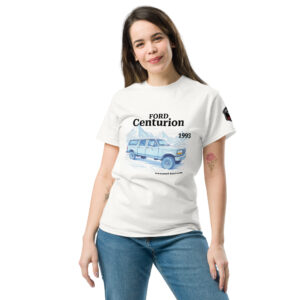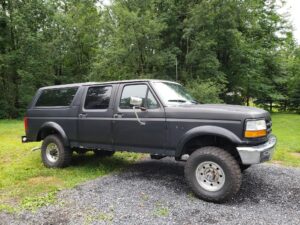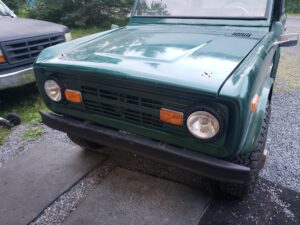How to Maintain and Upgrade the Fuel System of a Classic Ford Bronco

Introduction
The fuel system of a classic Ford Bronco (1980-1990) plays a critical role in engine performance and efficiency. Over time, components such as the fuel pump, carburetor, and fuel lines can wear out or become clogged, leading to poor fuel delivery and reduced performance. This guide will help you restore, maintain, and upgrade your Bronco’s fuel system to ensure optimal functionality.
1. Components of the Fuel System
The fuel system in a Ford Bronco includes the following key components:
- Fuel Tank:
- Stores the fuel and delivers it to the fuel pump.
- Fuel Pump:
- Moves fuel from the tank to the carburetor or fuel injectors.
- Carburetor or Fuel Injectors:
- Mixes fuel with air for combustion.
- Fuel Lines and Hoses:
- Transport fuel between components.
- Fuel Filter:
- Removes impurities from the fuel.
- Fuel Pressure Regulator:
- Maintains the proper fuel pressure for the engine.
2. Common Signs of Fuel System Issues
Be aware of these signs to identify fuel system problems early:
- Difficulty Starting the Engine:
- Cause: Weak fuel pump or clogged fuel filter.
- Solution: Inspect and replace the faulty components.
- Poor Fuel Economy:
- Cause: Leaking fuel lines or a malfunctioning carburetor.
- Solution: Repair leaks and rebuild or replace the carburetor.
- Engine Stalling or Hesitation:
- Cause: Dirty fuel injectors or low fuel pressure.
- Solution: Clean the injectors or check the fuel pressure regulator.
- Fuel Smell Around the Vehicle:
- Cause: Leaking fuel tank, lines, or hoses.
- Solution: Inspect and replace damaged parts.
- Noisy Fuel Pump:
- Cause: Failing or worn-out fuel pump.
- Solution: Replace the fuel pump.
3. Step-by-Step Guide to Restoring the Fuel System
A. Fuel Tank
- Inspect the Fuel Tank:
- Check for rust, leaks, or damage.
- Clean or Replace the Tank:
- Drain and flush the tank to remove debris or replace it if damaged.
- Recommended Part: Replacement Fuel Tank (Part Number: FT302).
B. Fuel Pump
- Test the Fuel Pump:
- Check the pressure and flow rate using a fuel pressure gauge.
- Replace the Pump if Needed:
- Install a new mechanical or electric fuel pump.
- Recommended Part: Electric Fuel Pump (Part Number: FP450).
C. Carburetor or Fuel Injectors
- Inspect the Carburetor:
- Check for dirt, wear, or leaks.
- Rebuild or Replace:
- Rebuild the carburetor using a kit or upgrade to a modern unit.
- Recommended Part: 4-Barrel Carburetor (Part Number: CB302).
- Clean Fuel Injectors:
- Use a fuel injector cleaning kit for better performance.
D. Fuel Lines and Hoses
- Inspect for Cracks or Leaks:
- Replace old rubber hoses with modern ethanol-resistant hoses.
- Recommended Part: Fuel Line Kit (Part Number: FLK500).
E. Fuel Filter
- Replace the Fuel Filter:
- Install a new filter to ensure clean fuel reaches the engine.
- Recommended Part: Inline Fuel Filter (Part Number: FF320).
F. Fuel Pressure Regulator
- Check the Fuel Pressure:
- Test the regulator with a gauge to ensure it maintains proper pressure.
- Replace if Faulty:
- Install a new regulator if pressure is inconsistent.
- Recommended Part: Fuel Pressure Regulator (Part Number: FPR400).
4. Upgrading the Fuel System
Consider these upgrades for better performance and reliability:
- High-Performance Fuel Pump:
- Provides consistent fuel delivery for high-performance engines.
- Recommended Part: High-Performance Fuel Pump (Part Number: HFP450).
- EFI Conversion Kit:
- Upgrade from a carburetor to an electronic fuel injection system for improved fuel efficiency and throttle response.
- Recommended Part: EFI Conversion Kit (Part Number: EFI302).
- Braided Stainless Steel Fuel Lines:
- More durable and resistant to wear and corrosion.
- Recommended Part: Braided Fuel Line Kit (Part Number: BFL450).
- High-Capacity Fuel Tank:
- Increase fuel storage for long trips or off-road use.
- Recommended Part: High-Capacity Fuel Tank (Part Number: HCT500).
5. Tools Required for Fuel System Maintenance
- Fuel pressure gauge.
- Socket wrench set.
- Line disconnect tool.
- Carburetor rebuilding kit.
- Safety gloves and goggles.
6. Maintenance Tips for the Fuel System
- Inspect and Clean Regularly:
- Check for leaks and clean components every 12 months.
- Use High-Quality Fuel:
- Avoid low-quality fuel to reduce deposits in the system.
- Replace Filters Frequently:
- Change the fuel filter every 15,000 miles (24,000 kilometers).
- Add Fuel Stabilizer:
- Use a stabilizer for vehicles that sit unused for extended periods.
- Monitor Fuel Pressure:
- Test the pressure regularly to ensure the system is functioning properly.
7. Recommended Replacement Parts
Here’s a list of commonly needed parts for restoring and upgrading the Ford Bronco’s fuel system:
- Replacement Fuel Tank: Part Number: FT302.
- Electric Fuel Pump: Part Number: FP450.
- 4-Barrel Carburetor: Part Number: CB302.
- Fuel Line Kit: Part Number: FLK500.
- Inline Fuel Filter: Part Number: FF320.
- Fuel Pressure Regulator: Part Number: FPR400.
- EFI Conversion Kit: Part Number: EFI302.
Conclusion
Maintaining and upgrading the fuel system of a classic Ford Bronco ensures optimal engine performance and efficiency. Whether you’re restoring the original system or upgrading to modern components, following this guide will keep your Bronco running smoothly for years to come.


